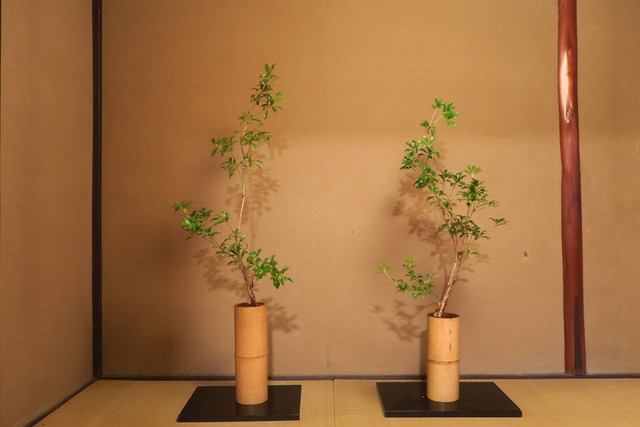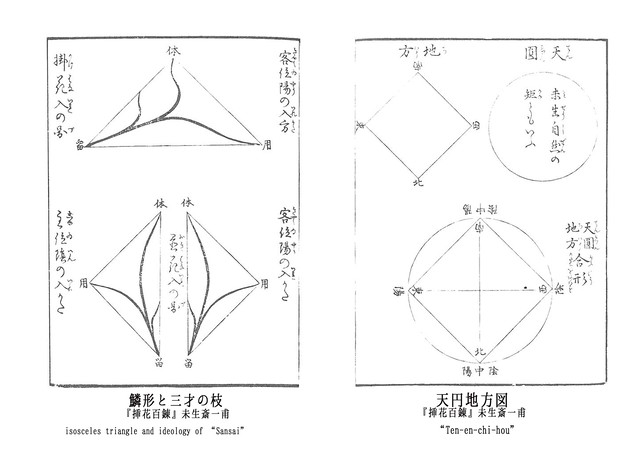生花 Traditional ikebana SEIKA style
“3つの枝先がそれぞれ天・地・人を表す、古典いけ花の代表的スタイル”
-The typical style of classic ikebana which shows ten(heaven), chi(ground) and jin(creation)-

古典いけ花のスタイル。江戸時代末期、大阪の華道家で未生流の開祖・未生斎一甫によって大成された。 中国の天円地方説に基づき天円(円)の中に地方(四角)を描き鱗形(直角二等辺三角形)を導き出し、その鱗形に「天(体)」「地(用)」「人(留)」三才の枝を配することで構成される。天地人三才とは、天地が和合し陰陽の気が交われば万物が形成され、その万物の中に人が存在するという思想。天候・土壌・耕作の関係で近世の農業書等でも頻繁に言及される。天が最も高い位置、地は最も低い位置、人はその中間の位置の枝を指す。
Seika is one of the tradirinal ikebana styles in Japan. It’s created by Mishosai-Ippo (ikebana artist in 18c). The shape of an isosceles triangle was based on “Ten-en-chi-hou”, the ideology of an ancient Chinese view of the universe. It shows the heaven(ten) as round(en) and the earth(chi) as a square(hou) then an isosceles triangle turns up in the round and square. It’s also brought another ideology of “Sansai”(Three functions of nature) composed by ten(heaven), chi(ground) and jin(creation). Three branches were arranged to show those three functions in ten-en-chi-hou.

ため(矯め)-る
いけ花の技法。生花などで枝や花に曲をつけたいときに、折ることなく曲げる手法。
葉組
葉が美しく、ある程度の長さがありいけられるお花において、そのお花ごとの出生に合わせ、葉を組み替え整えていける技法。
夏には花菖蒲や燕子花、冬には万年青、水仙などが代表的。
